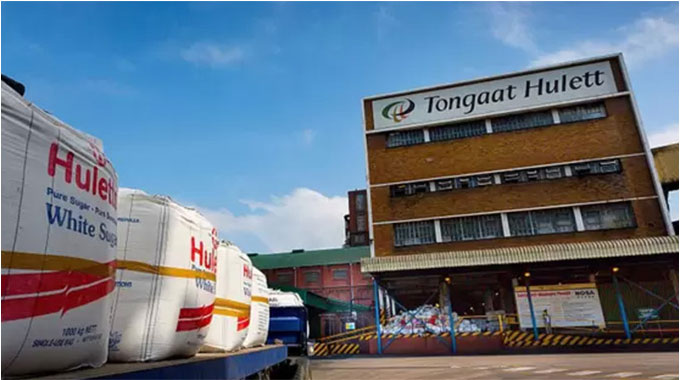Comesa trade supply chains remain constrained
TRADE supply chains remain constrained within the Common Market for Eastern and Southern Africa (Comesa) region amid renewed calls for countries to ensure full implementation of the Covid-19 pandemic trade facilitation guidelines.
Last year, on account of the adverse impact of the Covid-19 pandemic, a call was made within the Comesa region for the full implementation of guidelines that promote the movement of goods and services to facilitate regional trade.
Speaking during the 42nd Comesa Inter-governmental Committee virtual meeting last week, Zambia Minister of Commerce, Trade and Industry Chipoka Mulenga said supply chains were still constrained and prices for inputs and consumables rising in member States.
“Our countries have now started to experience the negative impact of Covid-19 induced disruptions of supply chains and weakening demand levels in our trading partners as our trade volumes are showing marked declines,” he said.
Minister Mulenga noted that the effects of the Covid-19 pandemic were likely to further weaken the performance of member States’ external markets and will also have negative impacts on imports into the region affecting availability of supplies, which would lead to further increase in prices.
Data from Comesa indicates that the value of intra-Comesa total exports declined by 11 percent from US$10,9 billion in 2019 to US$ 9,7 billion last year.
Similarly, the value of Comesa’s total exports to the world decreased by 27 percent from US$123,4 billion in 2019 to US$90,3 billion in 2020.
Minister Mulenga urged the 21-member States to start strategising on how to maintain the balance between the need to keep markets open while safeguarding their legitimate public health interests.
“One area where significant progress has been made is automation of cross-border clearance processes, the electronic tracking of movement of drivers and their cargo and the enhanced coordination of operations of border agencies,” he said adding that this has reduced NTB’s at border crossing and contributed to keeping supply chains for essentials goods open.
The guidelines for the movement of goods and services across the Comesa region were adopted by the 8th Comesa Extraordinary meeting of the Council of Ministers in May 2020, to minimise disruption to cross-border trade in goods and services.
Comesa secretary general, Ms Chileshe Kapwepwe noted that the path to full integration of the region was still marked by obstacles in the movement of people and services, hence the secretariat has continued to build capacity of member States on services negotiations and trade in services statistics.
“Globalisation of services provides the opportunity for developing countries and the Comesa region in particular, to find new niches where they can specialise, upscale and achieve rapid growth just as East Asian countries did in manufacturing,” she said.
Ms Kapwepwe appealed to member States to continue the implementation of the guidelines and make use of the online platform that was developed last year to ensure availability and seamless flow of goods and services during the Covid-19 pandemic period.
said supply chains were still constrained and prices for inputs and consumables rising in member States.
“Our countries have now started to experience the negative impact of Covid-19 induced disruptions of supply chains and weakening demand levels in our trading partners as our trade volumes are showing marked declines,” he said.
Minister Mulenga noted that the effects of the Covid-19 pandemic were likely to further weaken the performance of member States’ external markets and will also have negative impacts on imports into the region affecting availability of supplies, which would lead to further increase in prices.
Data from Comesa indicates that the value of intra-Comesa total exports declined by 11 percent from US$10,9 billion in 2019 to US$ 9,7 billion last year. Similarly, the value of Comesa’s total exports to the world decreased by 27 percent from US$123,4 billion in 2019 to US$90,3 billion in 2020.
Minister Mulenga urged the 21-member States to start strategising on how to maintain the balance between the need to keep markets open while safeguarding their legitimate public health interests.
“One area where significant progress has been made is automation of cross-border clearance processes, the electronic tracking of movement of drivers and their cargo and the enhanced coordination of operations of border agencies,” he said adding that this has reduced NTB’s at border crossing and contributed to keeping supply chains for
essentials goods open.
The guidelines for the movement of goods and services across the Comesa region were adopted by the 8th Comesa Extraordinary meeting of the Council of Ministers in May 2020, to minimise disruption to cross-border trade in goods and services.
Comesa secretary general, Ms Chileshe Kapwepwe noted that the path to full integration of the region was still marked by obstacles in the movement of people and services, hence the secretariat has continued to build capacity of member States on services negotiations and trade in services statistics.
“Globalisation of services provides the opportunity for developing countries and the Comesa region in particular, to find new niches where they can specialise, upscale and achieve rapid growth just as East Asian countries did in manufacturing,” she said.
Ms Kapwepwe appealed to member States to continue the implementation of the guidelines and make use of the online platform that was developed last year to ensure availability and seamless flow of goods and services during the Covid-19 pandemic period.-The Chronicle










